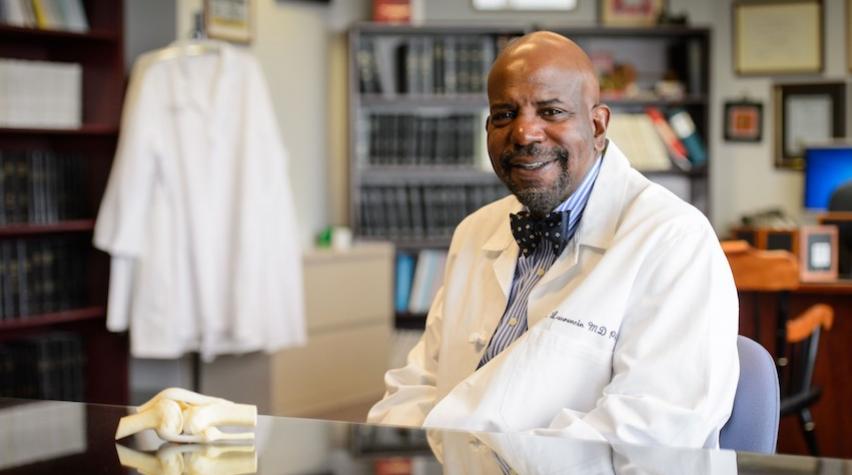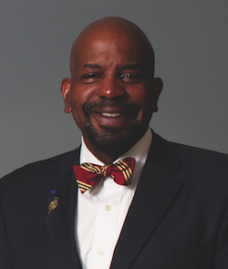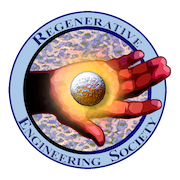
We recently caught up with Cato T. Laurencin, MD, PhD, to discuss the field of regenerative engineering. Dr. Laurencin is on the Managing Board of the Regenerative Engineering Society, and Director of the Raymond and Beverly Sackler Center for Biomedical, Biological, Physical and Engineering Sciences. He also serves as the chief executive officer of the Connecticut Convergence Institute for Translation in Regenerative Engineering.
In your opinion, what are the most important components of regenerative engineering?
A critical component of regenerative engineering is using convergence to solve the challenge of complex tissue regeneration. Convergence is an approach to problem solving that cuts across disciplinary boundaries. It integrates knowledge, tools, and ways of thinking from life and health sciences, physical, mathematical, and computational sciences, engineering disciplines, and beyond to form a comprehensive synthetic framework for tackling scientific and societal challenges that exist at the interfaces of multiple fields. We believe that next-generation solutions will come from the deep integration of advanced materials science, stem cell science, physicochemical forces, developmental biology/morphogenesis, and clinical thinking. By merging these diverse areas of expertise in a network of partnerships, convergence stimulates innovation from basic science discovery to translational application. It provides fertile ground for new collaborations that engage stakeholders and partners not only from academia, but also from national laboratories, industry, clinical settings, and funding bodies. The concept of convergence is thus meant to capture two closely related but distinct properties: the convergence of expertise necessary to address a set of research problems, and the formation of the web of partnerships involved in supporting such scientific investigations and enabling the resulting advances to be translated into new forms of innovation and new products.
The other critical component is that regenerative engineering is a field and pursuit that encompasses all. Our society is the first to have K-12 students as full members and we encourage those from the community to be members. We have a deep commitment to the next generation, particularly those who have traditionally not been “first-in” in gaining the benefits of science. Our initiatives include a K-12 newsletter, and our journal, Regenerative Engineering and Translational Medicine, which is the first to include a lay summary with each paper and a "News and Views" section.
How do you see this new technology being applied to solve problems?
Complex tissue regeneration is a relatively new concept that will take years to perfect, therefore, there are no current solutions. However, there are methods that are being tested at this time. Most scientists, engineers, and clinicians will agree that nothing short of a multipronged effort with multiple disciplines playing a role will result in a solution. The concept of convergence, where multiple disciplines interact and form new approaches that could not have been born from any one individual discipline, is of paramount importance.
What are some of the challenges researchers face in the field of regenerative engineering?
A major challenge that researchers face when undertaking highly interdisciplinary projects is funding. While there is a steady evolution towards the concept of convergence, it is still difficult to get highly interdisciplinary projects funded. The funding opportunities for such ideas are not as widespread as others are. This is changing, however, with groups including NSF and NIH making convergence research a priority, particularly in the area of tissue regeneration.
In addition, a challenge lies in connecting highly interdisciplinary teams. Superior collaboration between individual units is critical to the success of the convergent team.
Join the Regenerative Engineering Society today.
Learn more about the Regenerative Engineering and Translational Medicine Journal.

Cato Laurencin
Cato T. Laurencin is the Albert and Wilda Van Dusen Distinguished Professor of Orthopaedic Surgery, Professor of Chemical and Biomolecular Engineering, and the Professor of Materials Science and Engineering, and Professor of Biomedical Engineering at the University of Connecticut. He is also the Director of the Raymond and Beverly Sackler Center for Biomedical, Biological, Physical and Engineering Sciences, and the Chief Executive Officer, The Connecticut Convergence Institute for Translation in Regenerative Engineering. Read more



